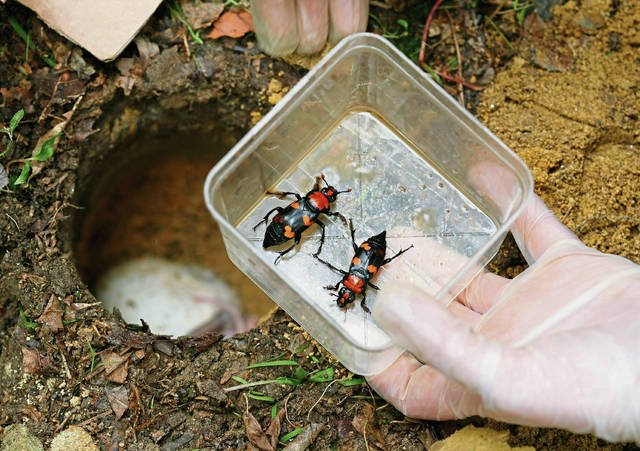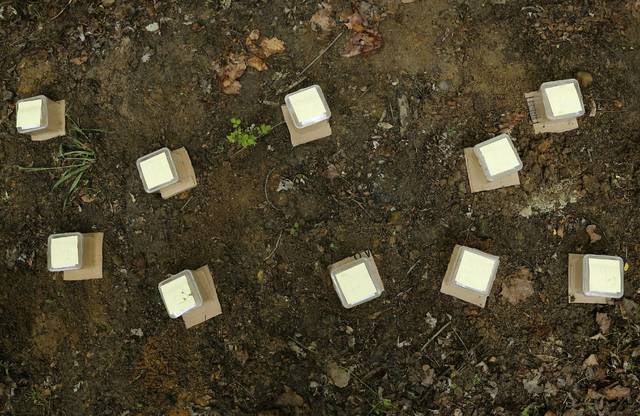Conservationists say endangered beetle species found in Ohio
COLUMBUS, Ohio — When she saw the plump orange-and-black insect crawling on the rotting rat corpse, Andrea Malek didn’t know whether to cry, laugh or scream in celebration.
After a double take, she did all three.
It was a discovery 45 years in the making. Sitting at the bottom of her trap fashioned from a 5-gallon plastic bucket was an American burying beetle, a federally endangered species that hadn’t been found living in Ohio since 1974 — until now, that is.
And Malek didn’t find just one. She found three of the beetles at The Wilds last month: two females and a male, which she marked with tiny bee tags.
“It’s like having your best dream come true,” said Malek, a 25-year-old wildlife ecology technician from Zanesville. “It’s just amazing that all of our hard work is finally paying off.”
The American burying beetles are important because they turn decay into compost and help keep ecosystems in balance and clean, she said.
The beetle was once the most-common burying beetle in the country, found in 35 states in the eastern United States and parts of Canada. It was the first insect to be placed on the federal endangered species list, and that distinction has stuck since 1989.
Today, the insect remains in only a handful of states.
It’s believed the species is dwindling because of a lack of appropriately sized food sources, especially following the extinction of the once-abundant passenger pigeon in 1914. The beetle can’t bury animals that are too large. Animals that are too small, meanwhile, don’t provide enough food.
It’s also possible that light pollution, more competition from larger scavengers, increases in pesticide use and sweeping land-use changes might have hurt the beetle, experts say.
Remove the ads from your TribLIVE reading experience but still support the journalists who create the content with TribLIVE Ad-Free.


